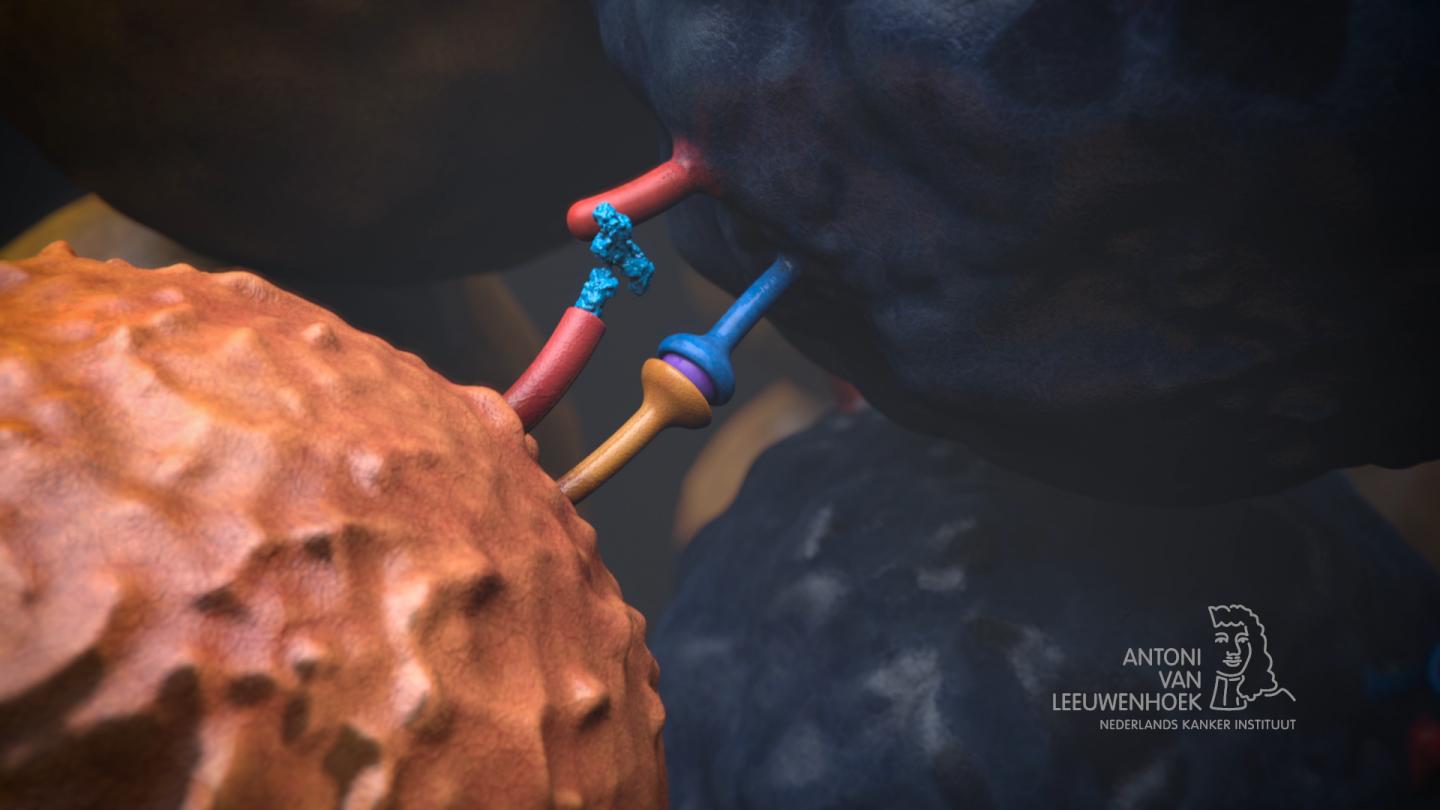현재 위치:홈 > 뉴스현황 > Press Events > Checkpoint Protein P...
저자: 업로드:2017-08-21 조회수:
Many cancer cells duck the immune system’s T cells by displaying programmed death-ligand 1 (PD-L1), a cell-surface protein that engages programmed cell death protein 1 (PD-1), another cell-surface protein, this one displayed by T cells, and thereby signals T cells to stand down. Although the PD-L1/PD-1 connection is well studied and is the inspiration behind a new class of anticancer drugs called checkpoint inhibitors, it isn’t as well understood as scientists would like. Outstanding questions include: Why is PD-L1 more abundant in some cancers than in others? And why is checkpoint therapy more helpful in some patients than others?
Hoping to shed light on such questions, two teams of scientists decided to investigate the PD-L1/PD-1 connection. Both teams - one based in The Netherlands, one in Australia - focused on PD-L1 and how it comes to be expressed, and how it manages to persist, on the surface of cancer cells.
Although the teams used different methods, they arrived at a similar result—another cell-surface protein has PD-L1’s back. This PD-L1 partner is called CMTM6. It co-localizes with and binds to PD-L1, protecting it from degradation. Now that PD-L1’s hidden enabler has been revealed, it could become a prognostic marker, indicating which patients may respond best to checkpoint inhibitor drugs, or it could become a drug target itself.
Both teams published their findings August 16 in the journal Nature. One paper, from the Netherlands Cancer Institute, was entitled “Identification of CMTM6 and CMTM4 as PD-L1 Protein Regulators.” The other paper, from the Peter MacCallum Cancer Centre, was entitled “CMTM6 Maintains the Expression of PD-L1 and Regulates Anti-Tumour Immunity.” Each team used a different loss-of-function screening method. The Netherlands-based team used a haploid genetic screen; the Australia-based team, a CRISPR/Cas9 screen.
“Here we identify the uncharacterized protein CMTM6 as a critical regulator of PD-L1 in a broad range of cancer cells, by using a genome-wide CRISPR–Cas9 screen,” wrote the authors of the paper prepared by the Netherlands-based team. “CMTM6 is not required for PD-L1 maturation but co-localizes with PD-L1 at the plasma membrane and in recycling endosomes, where it prevents PD-L1 from being targeted for lysosome-mediated degradation.”
"We always thought PD-L1 was a loner at the cancer cell surface, but it turns out that it binds to another protein," said the Netherlands Cancer Institute’s Ton Schumacher, Ph.D. "This other protein, called CMTM6, stabilizes PD-L1 and thereby increases the capacity of cancer cells to inhibit the immune response."
